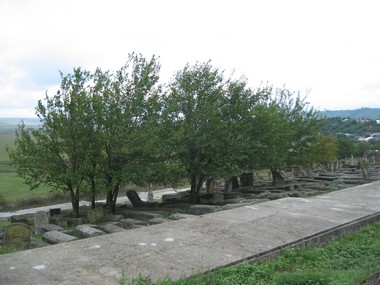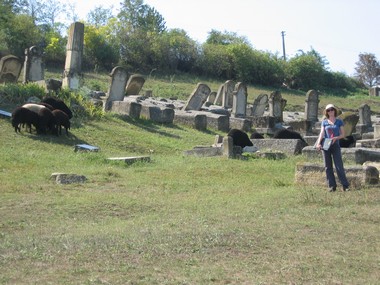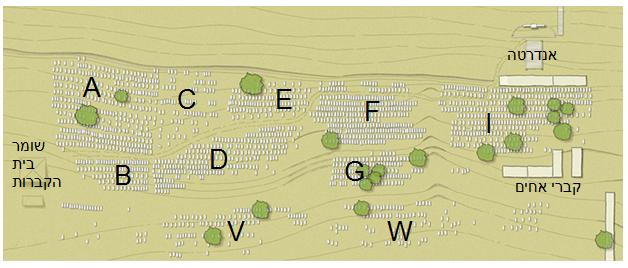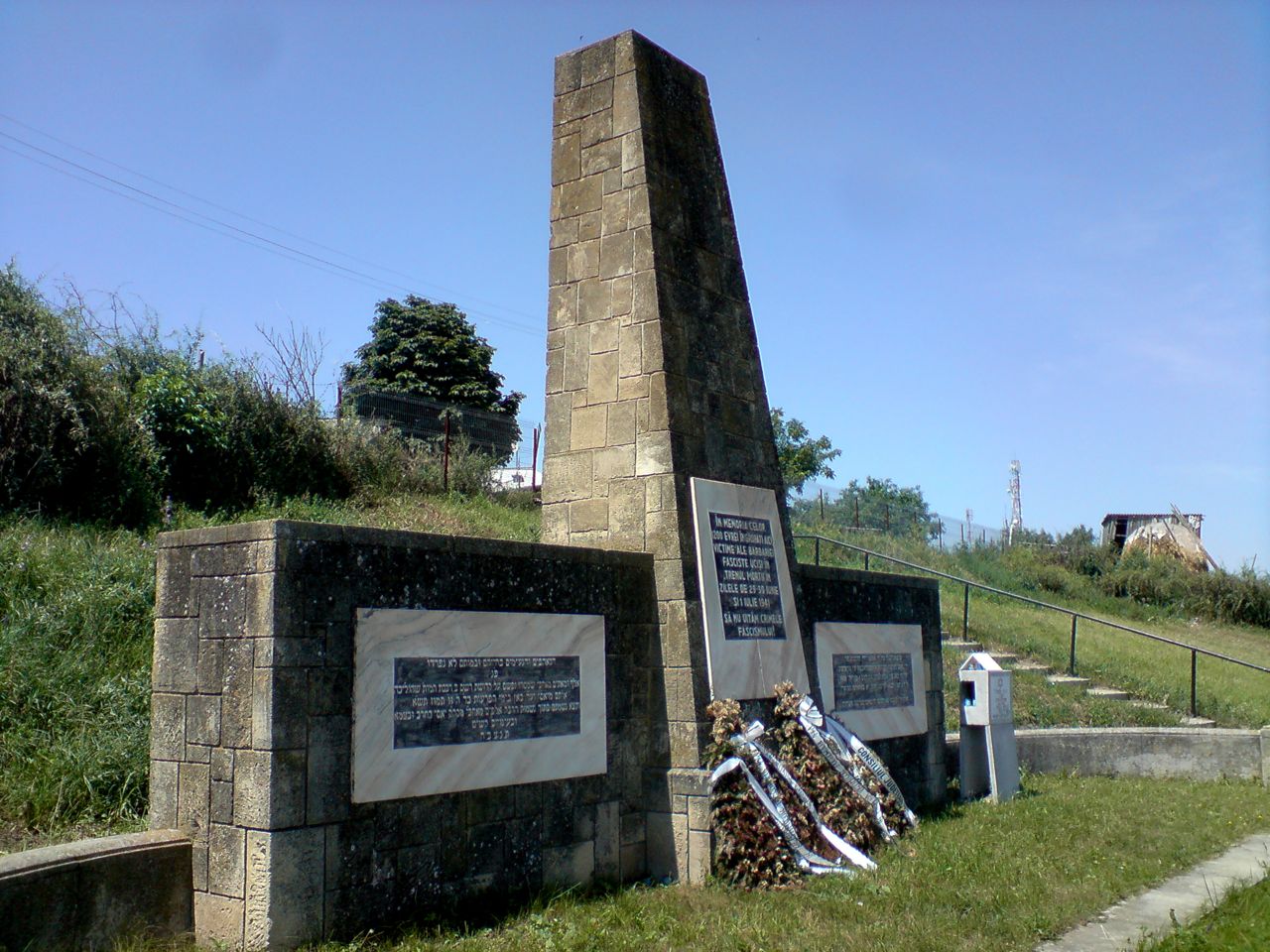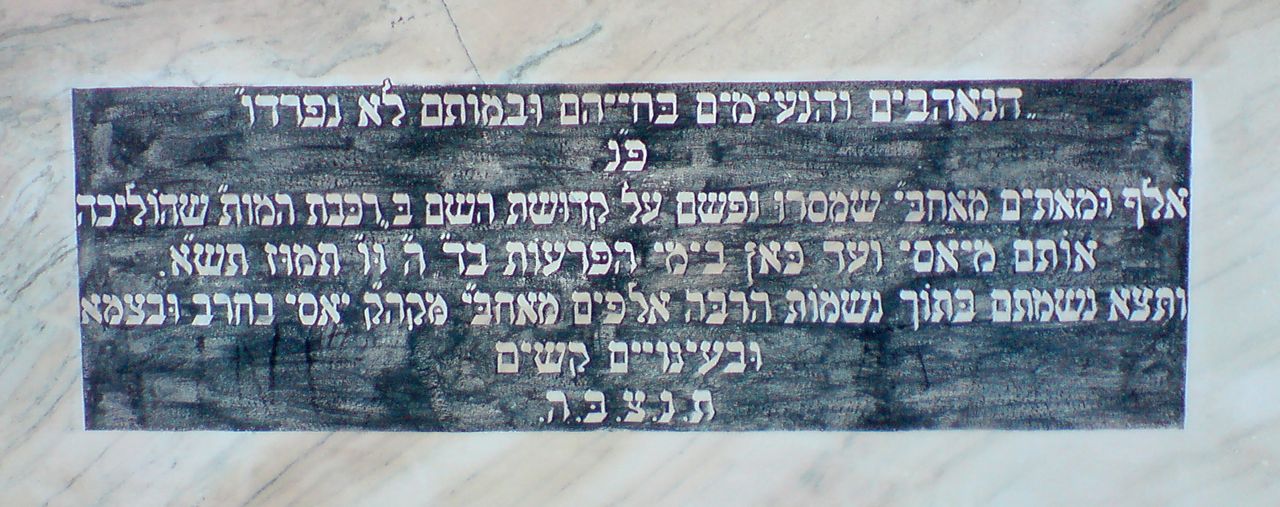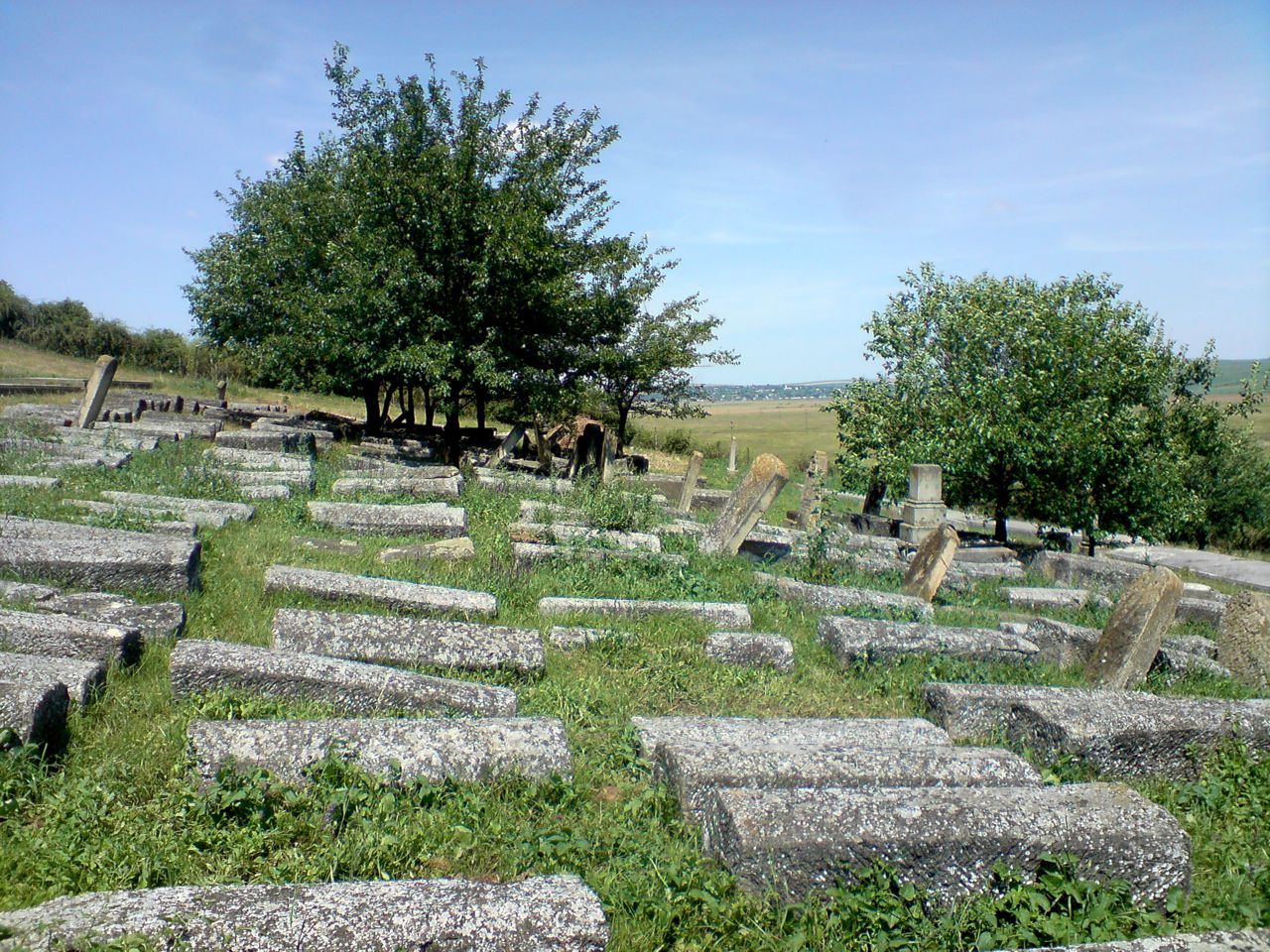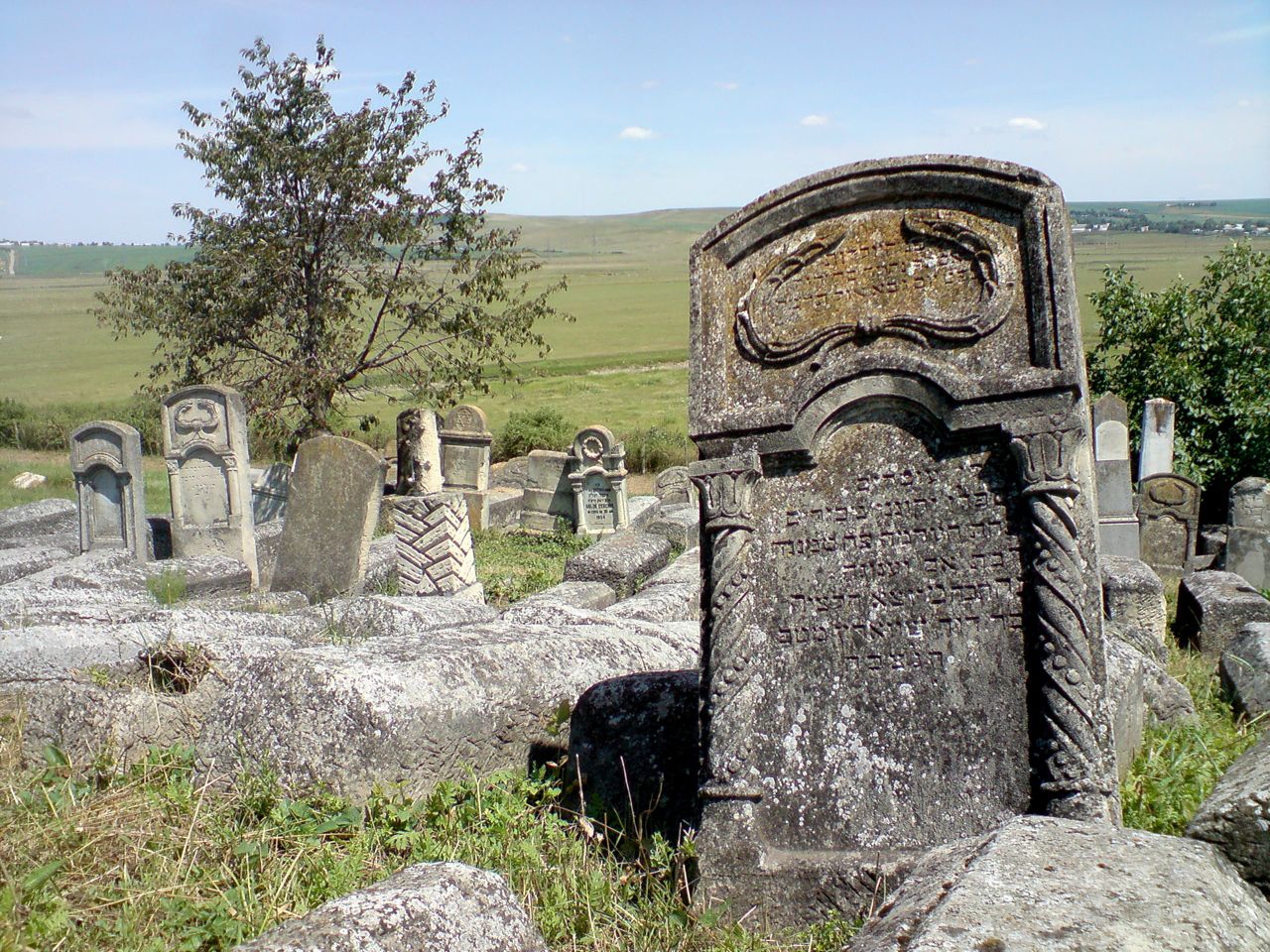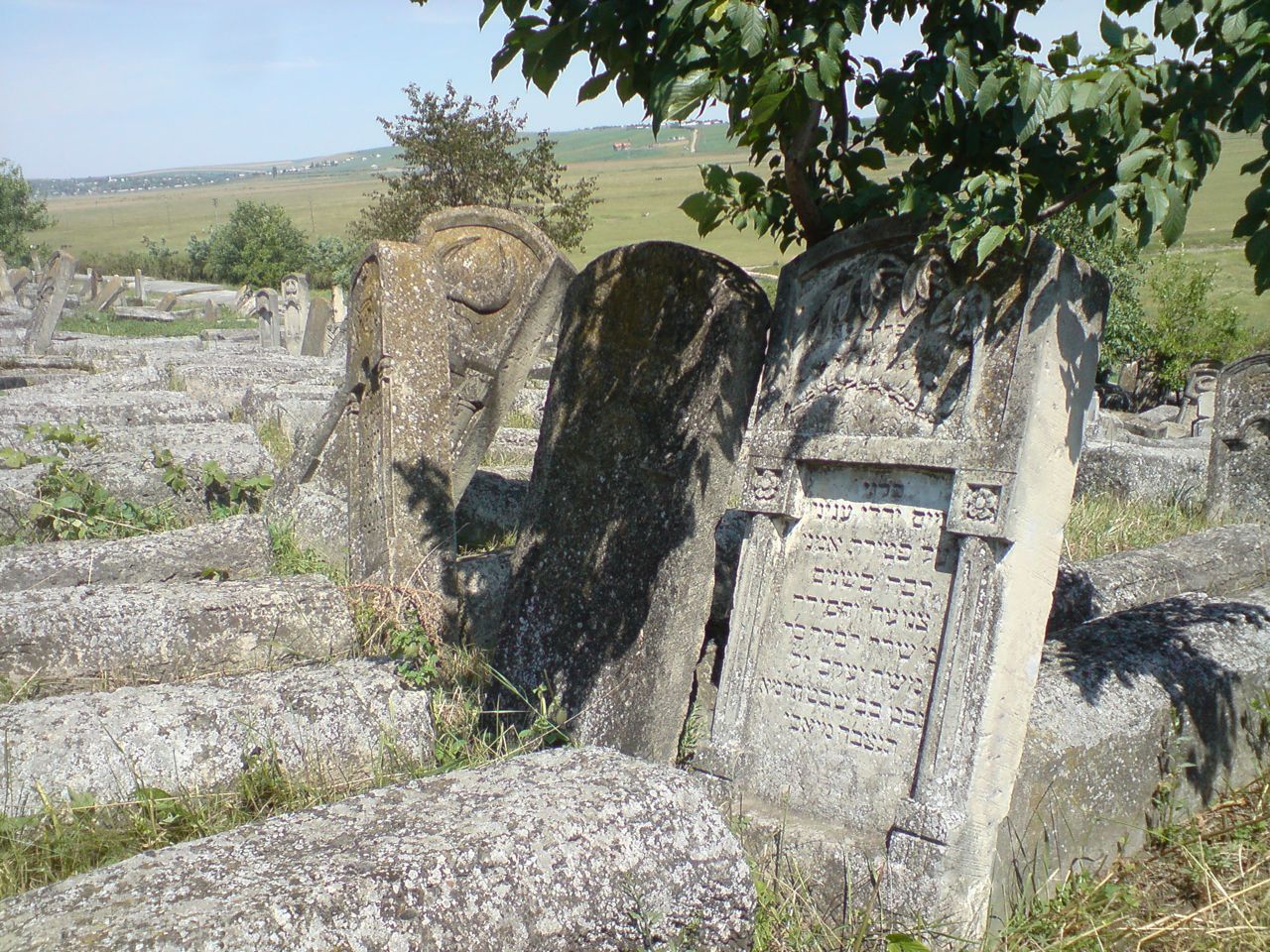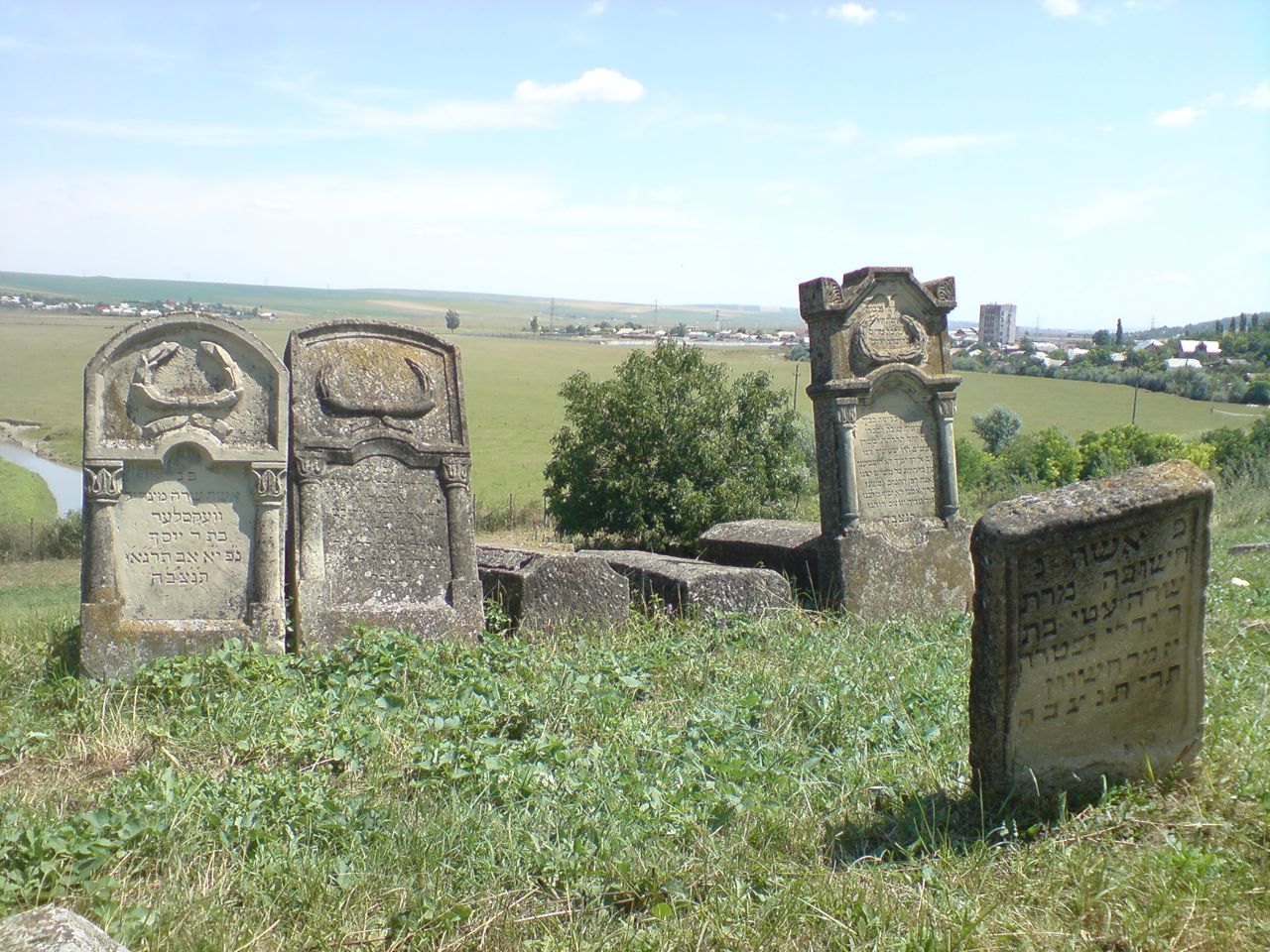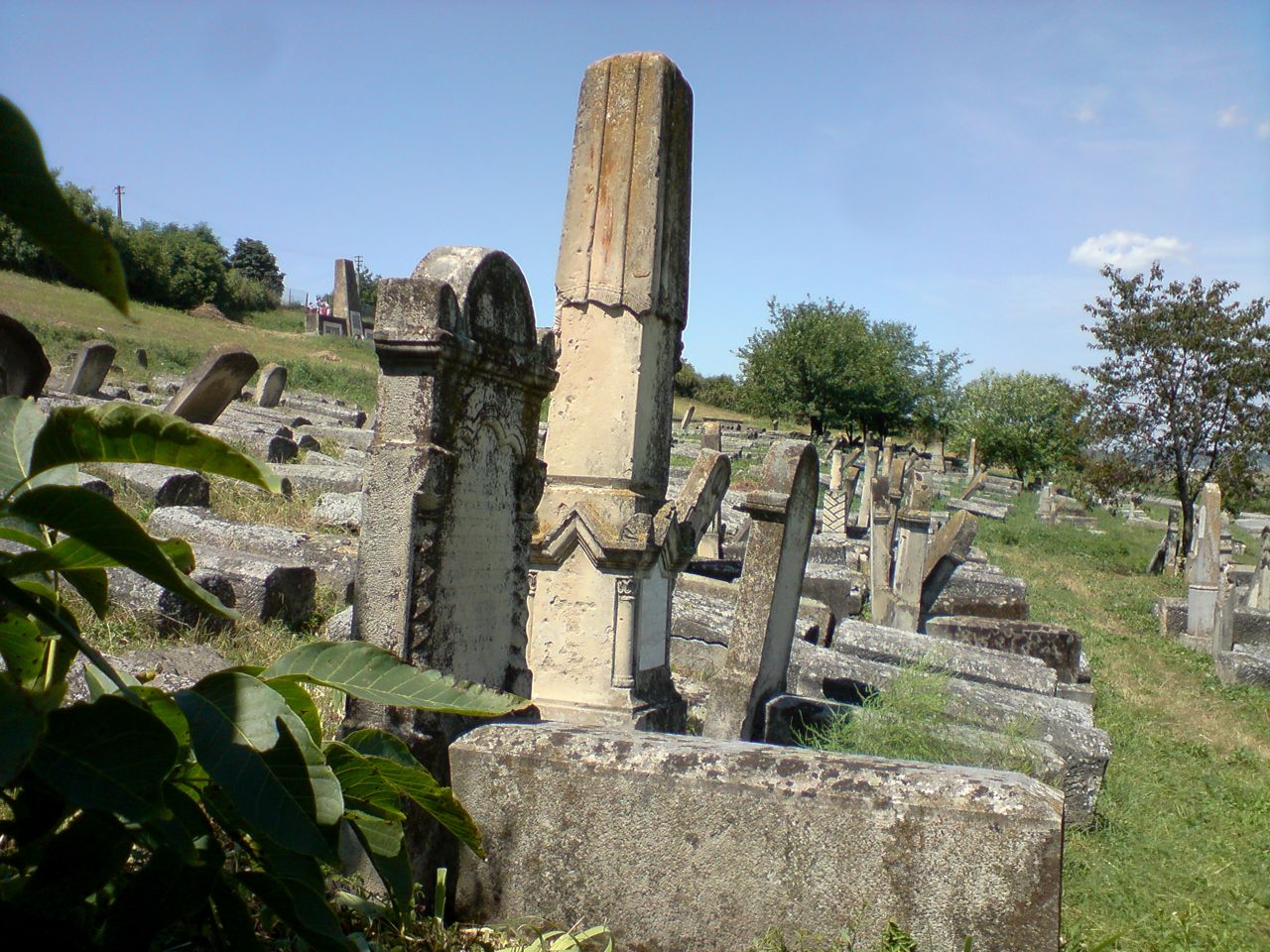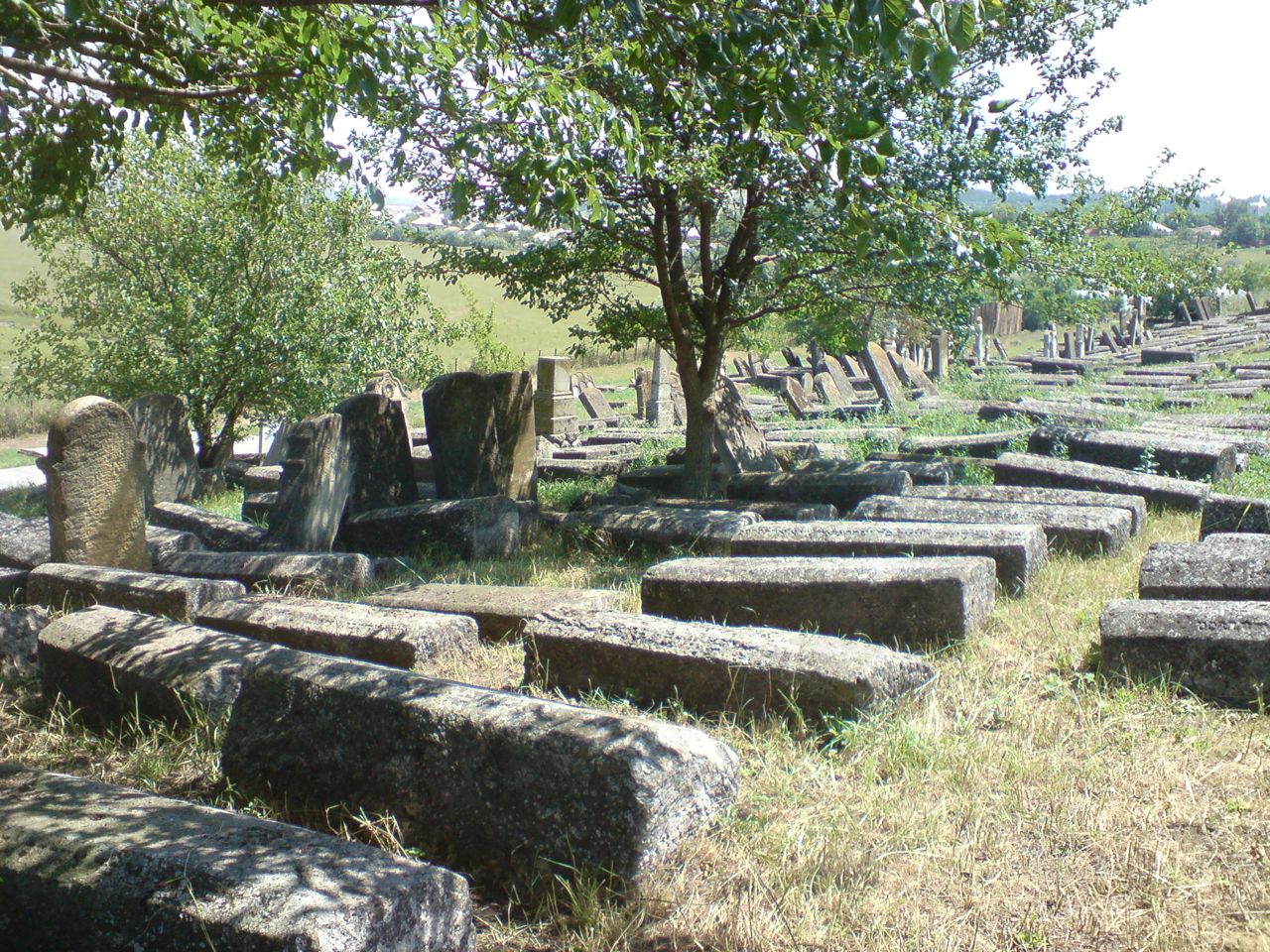ALTERNATE NAMES: PODU ILOAIEI [ROM], PODU ILOAIE, PODULLOAE, PODUL-ILOAIEI, PODUL-ILOAEI, PODU ILOAEI,פּאָדעלוי PODUL-LELOAEII . 47°13' N, 27°16' E, 16 miles WNW of Iaşi. 1900 Jewish population: 1,962. Podu Iloaiei is a town in Iaşi judet, 9,739 inhabitants as of 2002, and declared a town in 2005. Four villages are administered by the town: Budăi, Cosiţeni, Holm and Scobâlţeni. Wikipedia.
- Pinkas ha-kehilot; entsiklopediya shel ha-yishuvim le-min hivasdam ve-ad le-aher shoat milhemet ha-olam ha-sheniya: Romania vol. 1
(Jerusalem, 1969) - Pinkas HaKehilot, Romania, Vol. 1 (1969), pp. 197-200: "Podul Iloaiei".
The Jewish Community of Poduol Iloaiei. [June 2013] - History/Yizkor. Yizkor: Obstea Evreiasca din...Podu Iloaiei . [May 2013]
- Jewish history. [June 2013]
- 2009 Vandalism of Mass Grave. [June 2013]
- JewishGen Romania SIG
-
Ehpes-Chernowitz [Mar 2014]
Jewish Bukovina. [Mar 2014]
- US Commission No. ROCE-0314
(Note: Also see Iasi for death train victims)
Town population is 1000-5000 with no current Jewish population. The cemetery is not land-marked. There is a caretaker in a manner of speaking. 1810 is the date of the earliest known Jewish community in town. The inactive Orthodox cemetery located on a rural isolated hillside without a sign. Access is open to all. A broken fence and a non-locking gate surround the cemetery. Tombstones date from the 19th and 20th centuries. 100-500 gravestones are in original locations with 25%-50% of the surviving stones toppled or broken. The limestone tombstones and memorial markers flat stones with carved relief decoration have Hebrew, Yiddish, and Romanian inscriptions. The cemetery, owned by the municipality, contains special a memorial monument to Holocaust victims. The property is now used for Jewish cemetery purposes only. Adjacent properties are agricultural. The cemetery is visited rarely private visitors. The cemetery was vandalized occasionally in the last ten years. No care or maintenance or structures. Vandalism is a slight threat; security is a moderate threat. Weather erosion and pollution are very serious threats. The vegetation overgrowth in the cemetery is seasonal problem preventing access and a constant problem, damaging stones. This email address is being protected from spambots. You need JavaScript enabled to view it., One MacArthur Blvd, Apt 1215, Westmont, NJ 08108, completed this survey on 17 August 1997. They visited the site on 23 and 24 July 1997.
"In 1982, the Jewish cemetery in Podu Iloaiei still had some gravestones from 1829 and 1830. One of them was for Haim sin Meer, who died on 1 Adar 5589 (Wednesday February 18, 1829); another one belonged to Avram sin Moise, and was dated June 1829; a third certified that Iehuda ben Iaakov died on July 28, 1829. The gravestones of Efraim - son of Iehuda Leib from Tismenita - and Haim Moise sin Hers are dated 1830. ... During the first years, the founders of the town were also the leaders of the Jewish community. Aspects of the modest day-to-day life are depicted in The Official Paper of the Moldavian Principality. ... A beautifully trimmed "matseva" in the style of the Jewish stone carvers was found at the grave of a Dov ben Samuel, who died in 1831. ... The tombstone of Slomo Iosef Leib - son of David, who died in Iasi in 1834, still exists today. The year 1835 was inscribed on the tombstone of Manili, the daughter of Mose Mirkis from Iasi, who was buried in Podu Iloaiei. " Source. [May 2013]
PODU ILOAIEI: (Iasi judet) US Commission No. ROCE-0314
The cemetery is located at str. Petru Rares no. 10, Podu Iloaiei, Moldavia region at 47°19' 27°25', 5 km from Iasi. Present town population is 5,000-25,000 with no Jews.
- Local Authority: Mayor Mihai Alexa, Sos.Nationala, Podu Iloaiei, Iasi judet. Phone: 740646.
- Religious Authority: The Jewish Community of Iasi, str. Elena Doamna no. 15. Phone: 113711; 114414.
- Regional Authority: The Federation of the Jewish Communities of Romania, Sf. Vineri str., no. 9-11, sector 3, Bucharest, Romania.
- Interested: "A.D. Xenopol" Institute of History, Lascar Catargi str., no. 15, 6400- Iasi (Iasi judet), Romania. Tel. 032/212614; e-mail: This email address is being protected from spambots. You need JavaScript enabled to view it.. Director: Alexandru Zub.
- Caretaker with key: Sofia Eleonora, str. Stejar 7, Podu Iloaiei, Iasi judet
The 1831 Census registered 284 Jewish inhabitants. The 1899 Census registered.1962 Jewish inhabitants The Census from 1910 registered 1895 Jewish inhabitants. The 1930 Census registered 1601 Jewish inhabitants. The Jewish community was founded in 1818. The Great Synagogue was inaugurated in 1876. In 1892, there were six synagogues in Podu Iloaiei. The first Jewish school was founded in 1902. A new school building was dedicated in 1914. In 1941, the Jews were deported to Oltenia (South of Romania). Prominent residents include Rabbis: Moshe sin Leizer 1831-1845; Ghedalia Aharon; Uri Landman; Elie Rosenthal; Burah Svart. Itic Kara (Svartz), writer, historian, translator (born 1906); Eliezer Frenkel, writer (born 1920); Solomon Podoleanu, writer; Iulian Schwartz (1910-1977), writer; and Simcha Schwartz (1890-1974), writer. This Jewish cemetery was established in the 19th century. The last known Jewish burial in cemetery was in 1960. Letcani (Iasi judet) also used this unlandmarked Conservative cemetery, 0.5 km from the congregation that used it.
The isolated urban hillside has no sign or marker. Reached by turning directly off a public road, access is open with permission. A continuous masonry wall and a gate that locks surround the site. The pre- and post-WWII size is 400-m X 150 m. 500 - 5,000 gravestones are visible in the cemetery. 1 to 20 are not in original location. More than 75% are toppled or broken. Vegetation overgrowth and water drainage in the cemetery are not problems. The cemetery has special sections for unmarried men, Cohanim, and children. The oldest gravestone dates from 1829. Tombstones date from the 19th through 20th century. Marble, granite, limestone, sandstone, and other materials are rough stones or boulders, flat shaped stones, finely smoothed and inscribed stones, and flat stones with carved relief decoration. Some have portraits on the stones and metal fences around graves. Inscriptions are in Hebrew, Yiddish, German, and Romanian. The cemetery has a monument to pogrom victims. The cemetery contains a marked mass grave. The national Jewish community owns the property now is used for Jewish cemetery purposes only. Adjacent properties are agricultural and residential. Compared to 1939, the cemetery boundaries enclose the same area. Frequently, organized Jewish group tours or pilgrimage groups, organized individual tours, and private visitors (Jewish or non-Jewish) visit.
No maintenance. The regular unpaid caretaker has the use of the agricultural land. No structures. Security, weather erosion, pollution, vegetation, and vandalism are slight threats.
This email address is being protected from spambots. You need JavaScript enabled to view it., Clinicilor str., no. 19, Cluj, Romania, tel. 064/190107 completed the survey on July 23, 2000 using the following documentation:
- Leonida Colescu, Analiza rezultatelor recensamîntului general al populatiei Romaniei de la 1899, cu o prefată de Sabin Manuila, Bucuresti, Institutul de statistica, 1944.
- I.M. Dinescu, Fiii neamului de la 1859 la 1915. Statistica sociala pe întelesul tuturora, Iasi, Institutul de Arte Grafice N.V.Stefaniu, 1920.
- Pinkas Hakehillot, Encyclopedia of Jewish Communities Romania, I-II, Jerusalem, 1980.
- D. Ivanescu, Populatia evreiască din orasele si tîrgurile Moldovei între 1774-1832 , în "Studia et acta historiae iudaeorum Romaniae", II, Bucuresti, Edit.Hasefer, 1997, p. 59-65.
- Kara, Obstea evreieasca din Podu Iloaiei, Bucuresti, Edit.Hasefer, 1990.
- George I. Lahovari, Marele dictionar geografic al Romaniei, 5 vol., Bucuresti, Edit.Socec, 1899.
- E. Schwarzfeld, Din istoria evreilor: împopularea, reîmpopularea si întemeierea tîrgurilor si tîrgusoarelor în Moldova, Bucuresti, 1894.
- N. Sutu, Notiti statistice asupra Moldaviei, Iasi, 1852.
He visited July 21, 2000 and interviewed Sofia Eleonora, str. Stejar 7, Podu Iloaiei, Iasi judet. [June 2002]
Map courtesy of This email address is being protected from spambots. You need JavaScript enabled to view it. [July 2012]
Photos courtesy Noa Sofer, Shirit Cohen, Aviva Levin, Jonathan Jacobi, This email address is being protected from spambots. You need JavaScript enabled to view it. [July 2012]
(Letters on map refer to lists of burials which will be posted on the JOWBR website on JewishGen.org after Jan. 1, 2013.)
MASS GRAVE "Two trains departed from Iasi, Romania on June 30, 1941 bearing the survivors of the pogrom that took place in the city on June 28-29, 1941. One train traveled to Calarasi, while the other was destined for Podu Iloaiei. Both evacuation transports resulted in the deaths of hundreds of Jews, who succumbed to heat exhaustion, suffocation, dehydration and suicide during the journey aboard crowded, unventilated freight cars in the heat of the summer. ... The second death train also departed Iasi early on June 30. This transport carried 1,902 Jews who were packed into 18 railcars, along with 80 corpses of those who had been killed earlier. The train took eight hours to reach its final destination at Podu Iloaei, only 20 km from Iasi. As with the first train, hundreds died along the way. Only 708 of the captives reached Podu Iloaei, where they were confined to synagogues or assigned to private Jewish homes. The survivors remained between one and three months before being allowed to return to Iasi." [Sources: Ioanid, Radu. The Holocaust in Romania: The Destruction of Jews and Gypsies Under the Antonescu Regime, 1940-1944. Ivan R Dee, 2000, pp.80-90; Carp, Matatias. Holocaust in Romania: 1940-44. Primor Publishing Company, 1994, pp.159-166.] :
Photos courtesy This email address is being protected from spambots. You need JavaScript enabled to view it. [2008]
[UPDATE] Web page for Podul Iloaiei [November 2014]
[UPDATE] Photos by Charles Burns [April 2016]

